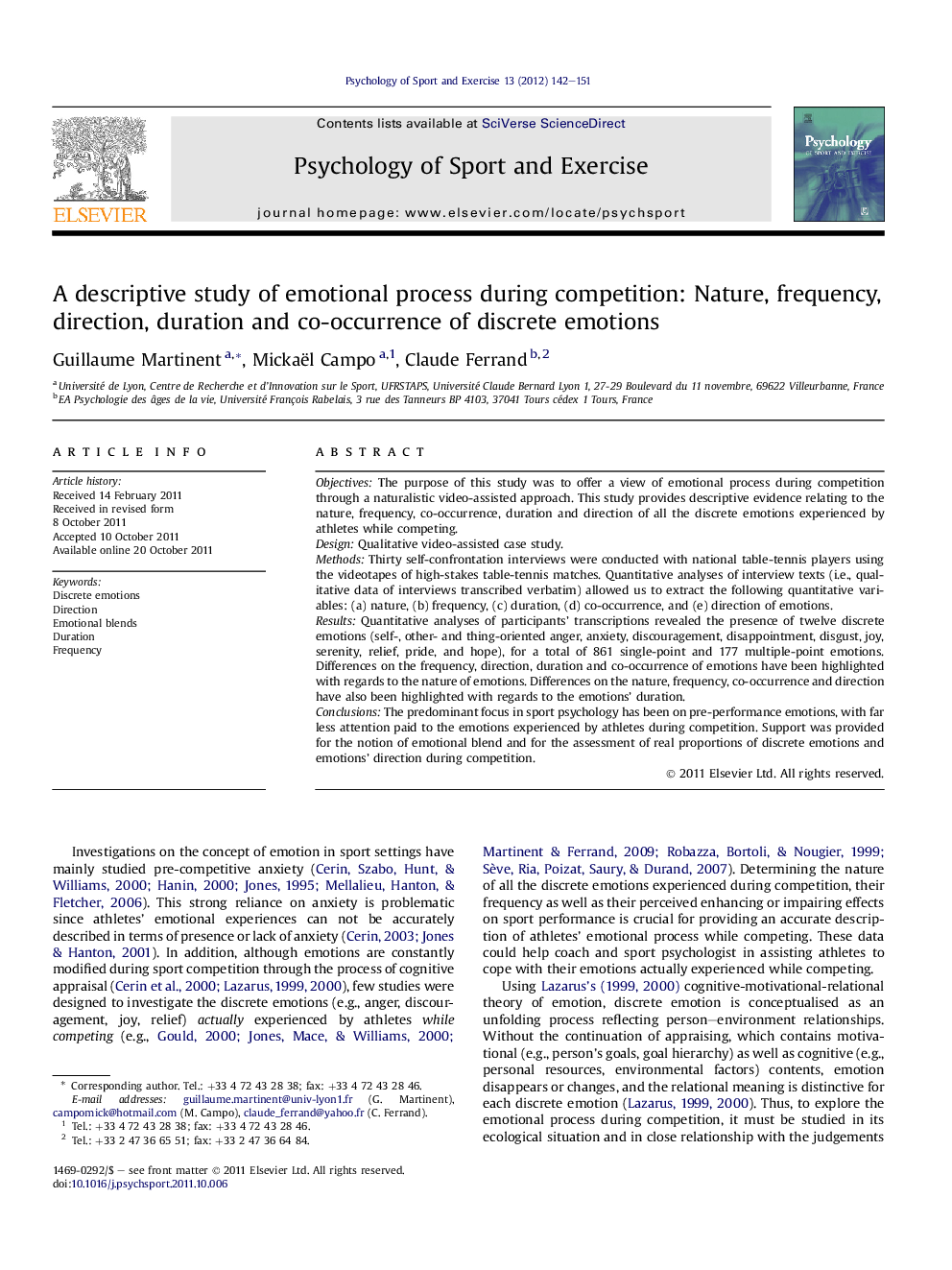| Article ID | Journal | Published Year | Pages | File Type |
|---|---|---|---|---|
| 894591 | Psychology of Sport and Exercise | 2012 | 10 Pages |
ObjectivesThe purpose of this study was to offer a view of emotional process during competition through a naturalistic video-assisted approach. This study provides descriptive evidence relating to the nature, frequency, co-occurrence, duration and direction of all the discrete emotions experienced by athletes while competing.DesignQualitative video-assisted case study.MethodsThirty self-confrontation interviews were conducted with national table-tennis players using the videotapes of high-stakes table-tennis matches. Quantitative analyses of interview texts (i.e., qualitative data of interviews transcribed verbatim) allowed us to extract the following quantitative variables: (a) nature, (b) frequency, (c) duration, (d) co-occurrence, and (e) direction of emotions.ResultsQuantitative analyses of participants’ transcriptions revealed the presence of twelve discrete emotions (self-, other- and thing-oriented anger, anxiety, discouragement, disappointment, disgust, joy, serenity, relief, pride, and hope), for a total of 861 single-point and 177 multiple-point emotions. Differences on the frequency, direction, duration and co-occurrence of emotions have been highlighted with regards to the nature of emotions. Differences on the nature, frequency, co-occurrence and direction have also been highlighted with regards to the emotions’ duration.ConclusionsThe predominant focus in sport psychology has been on pre-performance emotions, with far less attention paid to the emotions experienced by athletes during competition. Support was provided for the notion of emotional blend and for the assessment of real proportions of discrete emotions and emotions’ direction during competition.
► Thirty video-assisted interviews were conducted on national table-tennis matches. ► Nature, frequency, duration, blend and direction of discrete emotions were examined. ► Frequency, duration, blend and direction varied as a function of emotions’ nature. ► Emotional blends were relatively frequent during competition. ► Emotions’ duration influenced performance variability (i.e., direction).
